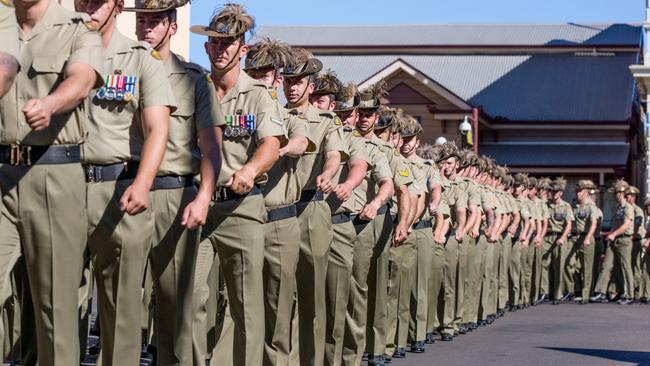Defence Strategic Review’s aims are welcomed but the future of Australian Defence Force lacks crucial details


But the document is not nearly as sweeping in scope as the government claims, and it still lacks crucial detail about what Australia’s future defence force will look like and how we will pay for it.
The jury is out on whether this review will amount to a seismic change in the way the country is defended or whether this will soon be seen as “just another defence review”.
But it does contain some sensible and much needed reforms.
Firstly, it acknowledges the “radical” change in Australia’s strategic outlook and warns that “major power” competition – in other words, between China and the US – could spill into conflict.
It is refreshingly blunt in its appraisal of China, accusing Beijing of the largest military build-up since World War II without transparency or reassurance about its intent.
The review reinterprets and broadens the notion of Australia’s defence interests beyond continental security, saying they must also include trade and supply routes, collective security with regional allies and the defence of the rules-based order.
It argues that the current ADF is unfit to deal with these changed circumstances and must be shaken up.
The review tells us about some of these changes, but not all of them.
For example, the review transforms the role of the army by slashing the number of its planned future armoured vehicles, saving many billions of dollars, which will be used to buy new capabilities, including long-range missiles and underwater drones.
The army has been given new roles, including using its vehicles to fire land-based missiles and expanding its landing craft for amphibious operations in Australia’s north.
The best part of this review is that it finally calls for a missile defence heavy force – to be fired from vehicles, ships, planes and submarines – which can attack enemies many hundreds of kilometres away. This helps to rectify an embarrassing lack of firepower in the ADF and creates a formidable deterrent for would-be aggressors.
The review also calls for a welcome change in procurement priorities, saying defence should abandon its pursuit of ‘perfect solutions’ and focus on what works and can be afforded. This is a nod to the endless list of projects that are delayed and over budget because defence has tried to build a Ferrari rather than a Toyota.
But the surprising and disappointing gap in this document is that it defers a decision on the size and composition of the navy’s surface fleet.
In other words, this much hyped-review didn’t tell us anything about the multi-billion-dollar decisions about the future of the $45bn Hunter-Class frigate program or whether we will build a fleet of Corvettes or more Air Warfare destroyers.
The government says it will have a ‘quick’ review – yes, yet another review – to determine what sort of navy the country needs.
The second weakness in the document is the lack of clarity about what all of this will cost.
The government says the extra spending – on both the new items in this review and the AUKUS nuclear submarines – will not be felt in the four-year forward estimates of the budget.
It concedes that defence spending will have to rise after that but gives no indication of how far it will rise.
In other words, this review gives the government all the glory of sweeping pronouncements without having to start to pay more for it. Does that sound familiar?
So while the government’s new strategy of a more regionally potent force is sound and welcome, there is a long way to go before this new defence force becomes a reality.






The Defence Strategic Review has ushered in an overdue reset of decades of policy to create a more muscular, forward-looking long-range strike capability aimed squarely at combating and deterring a rising China.